
Test Car Information:
2014 Ford Fusion SE FWD
2.0L EcoBoost 4-cylinder engine;
6-speed automatic transmission;
Options: 202A Package, moonroof with garage door opener, 18-inch premium wheels
MSRP as tested: $29,400
Exterior
Most people will agree that the front of the Ford Fusion looks like an Aston Martin. Although Ford officially denied they “copied” the Aston Martin, but I believe the great look of this style is a big selling point for the Fusion.
The side profile of the Fusion give us an impression that it is a large sedan. In fact it is: the wheelbase of the Ford Fusion is 112.2 inches, just 0.9 inch shorter than the Mercedes-Benz E class sedan. Taken into account that the Fusion is based on a front-wheel-drive platform (which usually has shorter wheelbase for the same passenger cabin size compared to a RWD car), judging from wheelbase the Fusion is much bigger than other competitors such as the Toyota Camry, Honda Accord etc.
The exhaust outlets are hidden behind the rear bumper, and the openings are integrated into the bumper too.
The engine bay looks clean and in order. The 4-cylinder turbo engine takes up most of the spaces under the hood. From my point of view a V6 engine will not has enough space to be fitted into Fusion’s engine compartment.
From the below image it can be clearly seen that the engine is placed in front of the front axle, which is a typical front-wheel-drive layout design.
The upper radiator support is made of engineering plastic, which can help to absorb impact energy in a frontal crash accident. Had it made of steel or with a better shape design, the Fusion might get a better rating in the IIHS small overlap test (the current Fusion only get an “Acceptable” rating).
Interior
Contrary to the relatively longer wheelbase, the interior of the Fusion is not roomy compared to its competitors. Both of the front seats and the rear seats has some indications of “sporty”. The front seat cushion has good support and so does the backrest’s lumbar support. And the height adjust range is wide and should satisfy most drivers’ seating preferences.
The distance between the front seats is reasonable and is similar to the Mercedes-Benz E class. Actually the interior space of the Fusion is very similar to the E class, subjectively speaking.
The Fusion’s back seat space is OK, with the driver seat adjust to the position that makes me comfortable, an average adult can sit in the back with approx. 4 inchces between his knee and the front seat backrest. And there is AC vents behind the front seat center armrest, this is a great feature for the rear seat passenger, especially for cars with dark exterior/interior, like our test car (which absorbs heat much quickly in the summer).
For the seating I only have one complaint: our test car is carring a price tag close to $30,000, but the front passenger seat height is still fixed and cannot be adjusted, and the default seat height is too low. While I understand the auto maker may want to fit people with different height, but not all of them may feel comfortable to sit so close to the floor. This may be a deal breaker for some customers.
The trunk is spacious and it can even fit a folded baby jogger. But one thing Ford designers may overlook is: when the trunk is opened, the bottom of the rim is too low which makes it easy to hit people’s head.
The interior of the Fusion has some hint of luxury, for example the simulated wood trim, is of high quality.
And the style of the front door loudspeaker mesh and the lock/unlock buttom, let me think of an Audi Q5.
The vanity mirrors behind the sunshade are illumiated.
Interior trims of the doors are also made with soft-touch plastics, or leather-wrapped.
The Fusion’s standard informatics system is easy to use. It looks a littlbe bit low-tech, but it does its job satisfactory; and it blends in the dash seamlessly.
However, the AC control is still manually controlled. For a car the approaching the $30k mark, we do want an automatic AC unit.
Our test car comes with a leather-wrapped steering wheel. While the stitching quality may not look like to be a first class job, the touch of the material is pleasant, my hand still feels comfortable after holding it for a 2-hour road trip.
The odometer reading is clear, but the style does not fit into the luxury profile very well, too geeky from my point of view.
The style of the shift stick and also the electronic brake, let me think of an Audi too.
The moonroof control also looks like an Audi too.
Our test car also has the USB socket inside the center glove box. This is a must-have feature for those who will do frequent long road trip and are not satisfy with the XM radio’s sound quality.
Driving and Handling
Our test car is equipped with the 2.0L turbo 4-cylinder engine, which outputs 231hp@5500rpm and 270 lb-ft of torque at 3000rpm. The curb weight of the 2.0L turbo engine FWD Fusion is over 3,400 lbs, the power level of the 2.0L turbo four makes you feel the acceleration is swift, but not quick.
The turbo engine has noticeable turbo lag which generates a springy feel when you accelerate. And the programming of the ECU control will delay the output increase for around 1 second, in the situation that you want to accelerate harder and sudenly further press down the gas pedal.
Because of the longer wheelbase and the driver seat position is relatively farther to the front axle (compared to most FWD car), the steering give me a slight impression of driving a RWD sedan, in the sense how the car turns when you rotate the steering wheel.
Our Fusion test car has 235/45R18 tires, the width (235cm) and wheel diameter (18-in) combination is uncommon in cars in this price range. Usually only SUV or entry-level luxury sports car will has wider tires and bigger wheels like this.
The rear suspension design of the Fusion is actually of very high-end: such aluminum H-arm design can also be seen in the BMW 5/7 series, and also current Ferrari sports cars.
From our comprehensive data list, the chassis torsional rigidity of the current Fusion is 19,286 nm/deg. This value is normal for cars within this price level, but is not very high. Obviously it does not reach the solid feeling in luxury cars like the BMW 3/5 series or the Mercedes-Benz S class. When you are driving on roads that have moderate uneven surfaces, looking at your rearview mirror you will find the thin metal defrost lines in the rear glass slightly vibrating, a sign that the car body has high frequency slight twisting, caused by the torsional rigidity is not enough to resist different forces applied to the suspension ancor points, which are located at four corners of the car body.
The Fusion feels stable and planted on highway, but you can definitely tell the suspension setting is more inclined to the soft side when the road is bumpy. So the Fusion is not for spirited driving, it is a highway cruiser, good for your daily commute and weekend grocery shopping.
Build Quality
One of my major concern of the Ford Fusion is its build quality. Some are by design, some are from the process of assembling the car. Below are some examples.
The flooring carpet only covers places you commonly see, so you can see exposed paddings here and there.
You may think I am too picky, but please do not forget this test car’s MSRP is closed to $30,000.
There are also lots of wires and small motors exposed under the driver’s seat. Again you may say my standard is too strict for this car, but besides the $30k price tag, you may want to be careful if you accidently drop something under the seat and want to pick it up, please proceed slowly and do not let the sharp metals and screws cut your hand.
There are multiple places that there are big gaps between the interior panels, and some are obviously issues during assembling.
If you want to find your spare tire, you may also notice this rough glue padding in the rear car frame. This thick glue will not make the car frame more rigid, as long as the two metal parts has enough glue attaching them together.
All issues mentioned above are minor, but it is quite possible that some detailed-oriented customers will walk away because of those small things. Those are issues not hard to solve, and I believe it worth Ford invest a little bit to get those problem addressed in the following manufacturing years.
Above is our short review of the Ford Fusion. Before we conclude this article, please enjoy the full gallery from the test drive.






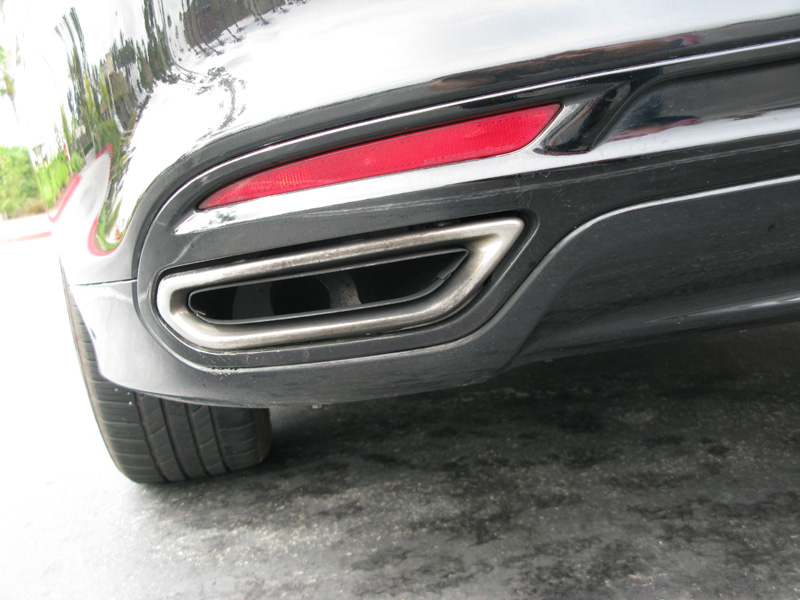




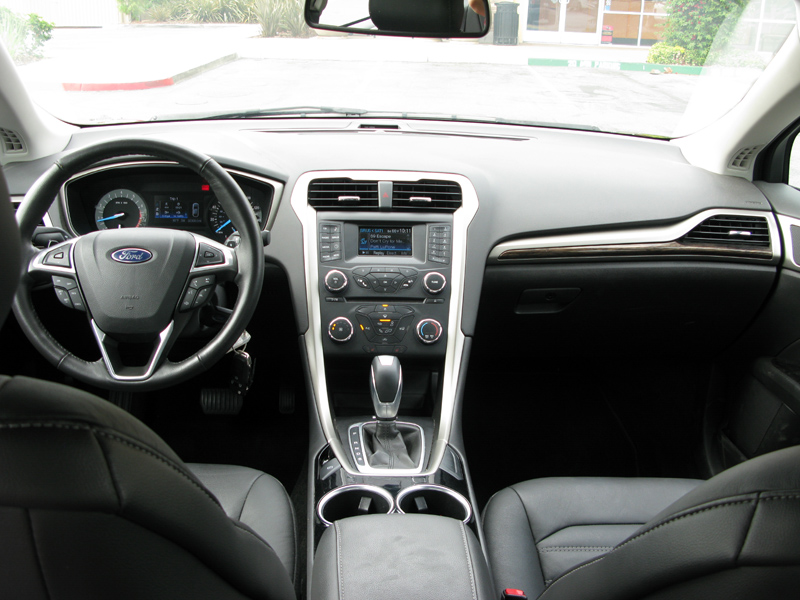



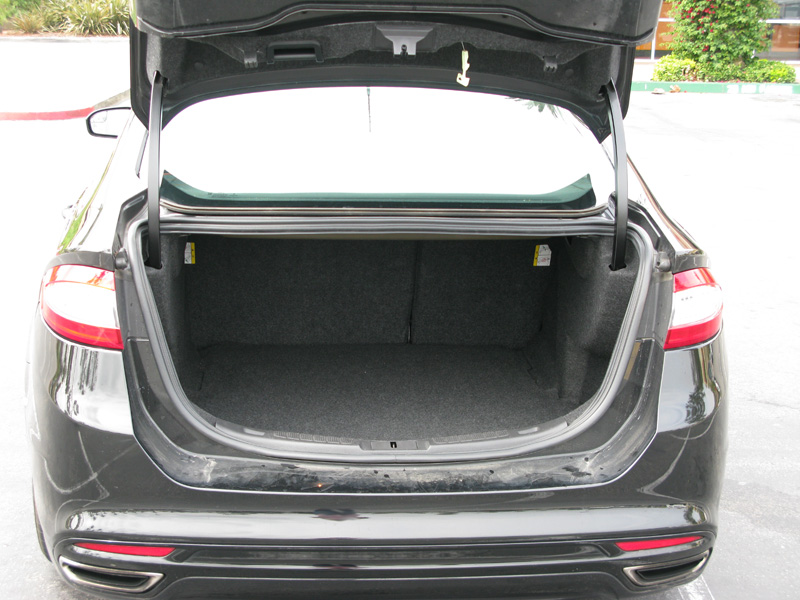


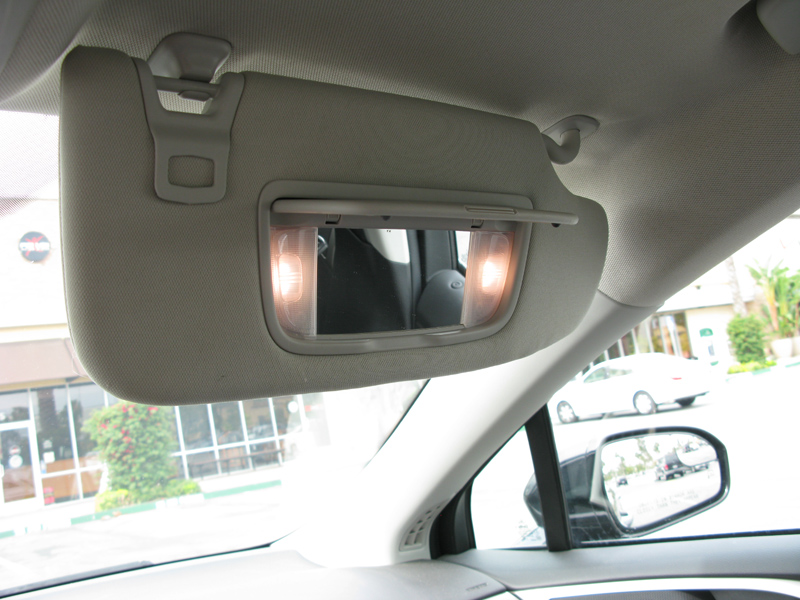

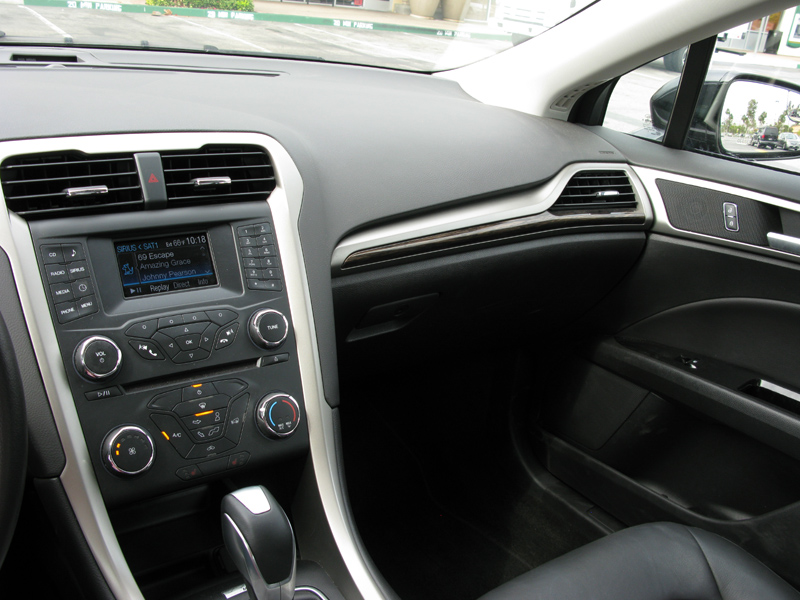

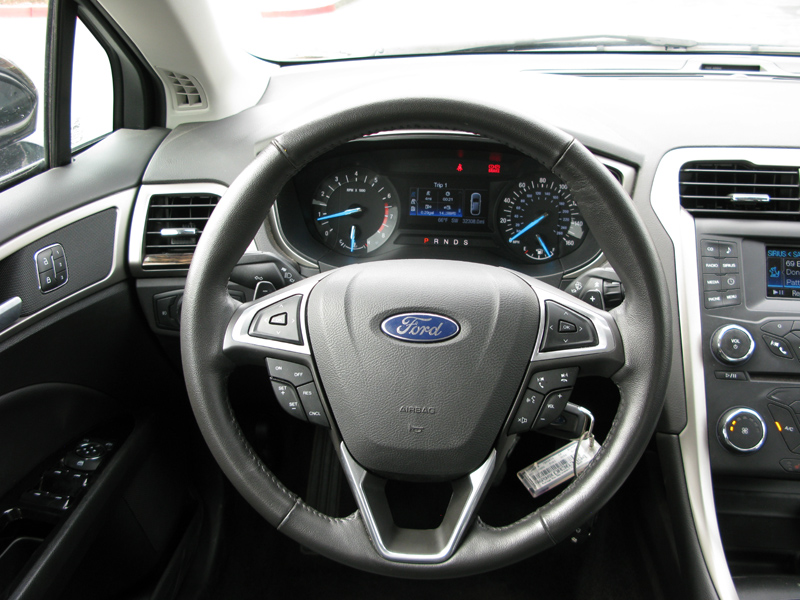


























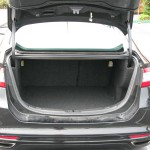





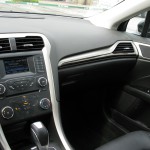









Recent Comments